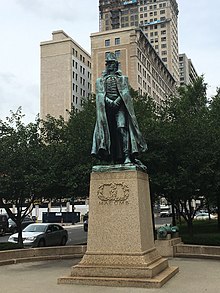
Adolph Alexander Weinman was a German-born American sculptor and architectural sculptor.

Karl Theodore Francis Bitter was an Austrian-born American sculptor best known for his architectural sculpture, memorials and residential work.

Carl Milles was a Swedish sculptor. He was married to artist Olga Milles and brother to Ruth Milles and half-brother to the architect Evert Milles. Carl Milles sculpted the Gustaf Vasa statue at the Stockholm Nordic Museum, the Poseidon statue in Gothenburg, the Orpheus group outside the Stockholm Concert Hall, and the Fountain of Faith in Falls Church, Virginia. His home near Stockholm, Millesgården, became his resting place and is now a museum.
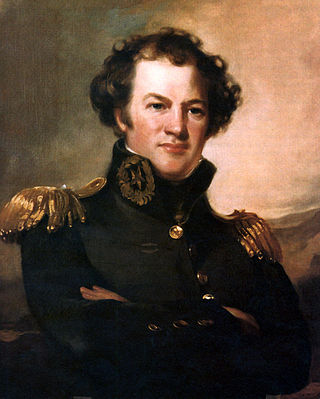
Alexander Macomb was the Commanding General of the United States Army from May 29, 1828, until his death on June 25, 1841. Macomb was the field commander at the Battle of Plattsburgh during the War of 1812 and, after the stunning victory, was lauded with praise and styled "The Hero of Plattsburgh" by some of the American press. He was promoted to Major General for his conduct, receiving both the Thanks of Congress and a Congressional Gold Medal.

The Alexander Column, also known as Alexandrian Column, is the focal point of Palace Square in Saint Petersburg, Russia. The monument was raised after the Russian victory in the war with Napoleon's France. The column is named for Emperor Alexander I of Russia, who reigned from 1801 to 1825.
Edward Q Wagner was a German-American sculptor.
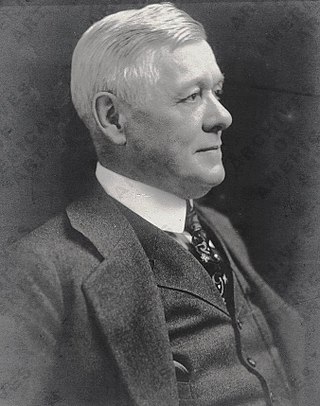
John Massey Rhind was a Scottish-American sculptor. Among Rhind's better known works is the marble statue of Dr. Crawford W. Long located in the National Statuary Hall Collection in Washington D.C. (1926).

Lincoln Monument (Philadelphia) is a monument honoring Abraham Lincoln in Fairmount Park, Philadelphia, Pennsylvania, United States. One of the first initiated in memory of the assassinated president, the monument was designed by neoclassical sculptor Randolph Rogers and completed in 1871. It is now located northeast of the intersection of Kelly Drive and Sedgley Drive, opposite Boathouse Row.

The Union Soldiers and Sailors Monument is a figural group sculpted by Adolph Alexander Weinman atop a pedestal designed by architect Albert Randolph Ross in Baltimore, United States, commemorating the Union military personnel of the American Civil War. The figural group shows Bellona and the personification of Victory together with a citizen-soldier turning from his plow and anvil as he dons a uniform and sword belt. Behind Bellona there is also a fig tree. The entire group stands on 12-foot high granite base, which has two relief panels. The monument's dimensions are approximately 10 ft.x102 in.x150 in. (sculpture) and 139x102x150 in. (base).
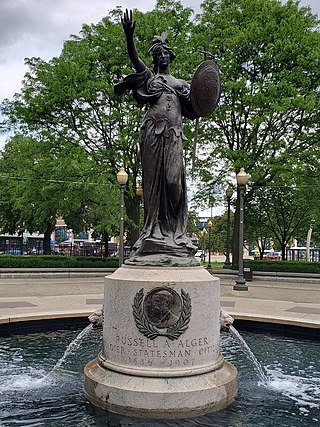
Russell Alger Memorial Fountain is a Detroit, Michigan fountain, one of the "most successful collaborations" created by the sculptor, Daniel Chester French and architect Henry Bacon. The bronze statue was cast by the Gorham Manufacturing Company. It is located in Grand Circus Park and was dedicated on July 27, 1921.

The Jefferson Monument is a statue by Moses Jacob Ezekiel located outside the Louisville Metro Hall in Louisville, Kentucky, US.
James Gilbert Claude Hamilton was a Scottish-American sculptor active in Cleveland, Ohio from about 1887-1898. According to Artists in Ohio, he was said to be a graduate of the Pennsylvania Academy of the Fine Arts, and according to the Building News and Engineering Journal, he served as an assistant to Alexander Milne Calder for sculptures in the Philadelphia City Hall. Hamilton was a Freemason as a member of Franklin Ledge #20.
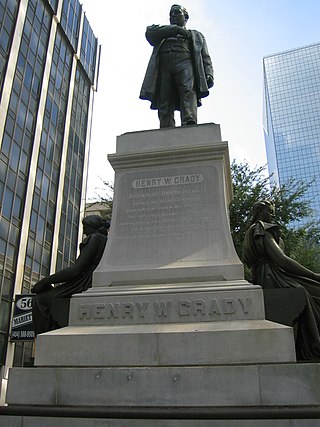
The Henry W. Grady statue is a monumental statue of Henry W. Grady in Atlanta, Georgia, United States. Built by Alexander Doyle in 1891, the statue lies at the intersection of Marietta Street and Forsyth Street in downtown Atlanta and was unveiled shortly after Grady's death in 1889. The statue has recently been the subject of controversy, as several groups have called for its removal due to Grady's support of white supremacy.

An equestrian statue of William Henry Harrison stands in Cincinnati's Piatt Park, in the United States. The monumental statue was designed by sculptor Louis Rebisso and was unveiled on Decoration Day, 1896.

The Alexander von Humboldt statue is a monumental statue in Chicago, Illinois, United States. Located in Humboldt Park, a major urban park in the Humboldt Park neighborhood, the statue depicts Alexander von Humboldt, a Prussian polymath and the park's namesake. The statue was dedicated in 1892.

The Alexander Hamilton statue is a monumental statue of Alexander Hamilton in Chicago, Illinois, United States. Located in the city's Lincoln Park, the monument was installed in 1952, having been completed several years prior in 1939.
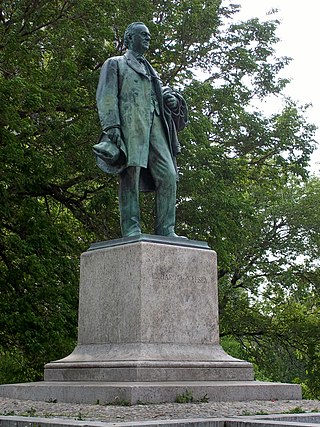
The Richard J. Oglesby statue is a monumental statue of Richard J. Oglesby in Chicago, Illinois, United States. Dedicated in 1919, the statue was designed by Leonard Crunelle and located in the city's Lincoln Park.

Stevens T. Mason, also known as the Stevens T. Mason Monument, is a monumental statue in Detroit, Michigan, United States. The monument was designed by sculptor Albert Weinert and architect H. Van Buren Magonigle in honor of Stevens T. Mason, who had served as the first governor of Michigan in the mid-1800s and is notable for being the youngest person to ever serve as the governor of a U.S. state. Mason's remains are interred underneath the monument, which is located in Capitol Park, the site of the former state capitol building. The monument was dedicated on Memorial Day 1908.
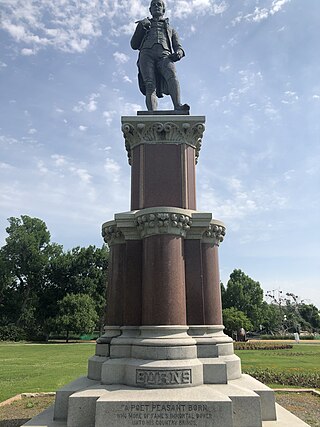
The statue of Robert Burns in Denver, Colorado, is a work of public art by the Scottish artist William Grant Stevenson, RSA. The bronze statue, of the Scottish national poet Robert Burns, stands on a pedestal of granite. The monument was donated to the City of Denver by the Caledonia Club, No 1, of Colorado. The monument was unveiled on July 4, 1904. The Robert Burns Monument was the first public monument to be erected in the City of Denver.
